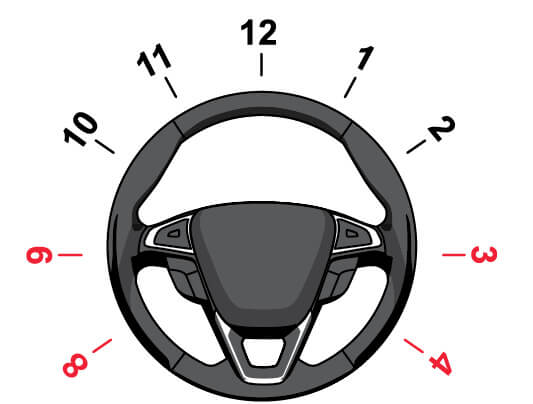Vehicle Control for Supervisors
Teaching a new driver can be stressful, but knowing you have some control can help. Always give as much advance notice as possible to a new driver. They may not see what you see, or perceive it as a danger. Professional driver education instructors are taught emergency responses to potential hazards that can crop up with an inexperienced driver behind the wheel. Here are some skills you can learn to help you maintain control from the passenger seat while teaching:
Emergency shifting: In a quiet, large, level, empty area, practice shifting the transmission from drive to neutral. This would be necessary if the accelerator becomes stuck. This would be necessary if the accelerator becomes stuck.
Taking the wheel: With an experienced driver in the driver’s seat, in a quiet, large, level, empty area, practice steering the car with your left hand from the passenger seat.
Mirrors: Adjust the mirror on the passenger sun visor so you can use it as a rearview mirror. If the right side mirror is properly adjusted, you can use it to monitor traffic to the rear from the passenger seat.
Awareness: Never assume everything is okay. Always check and re-check traffic and your teen’s actions. Remember that you are a second set of eyes and ears, and you need to be alert and ready to help your teen. Remember that you are a second set of eyes and ears, and you need to be alert and ready to help your teen.
Emergency stopping: Practice stopping the car with the parking brake (if your vehicle’s parking brake is located between the seats). This can be dangerous, even at low speeds, and should only be used as a last resort. Hold the release button in while pulling gradually up on the parking/emergency brake in order to stop the vehicle without causing wheels to lock up and put the vehicle into a skid.
Driving has changed
Chances are, today’s cars are not the same as they were when you learned to drive. To teach your teen effectively, you need to know about a few important recent changes in how cars work, how we drive, and how driving is taught. Check your owner’s manual for updates in vehicle technology or the website mycardoeswhat.org
Anti-lock Brake System (ABS): Most newer cars offer ABS as standard equipment. ABS is a dramatic safety improvement that works by letting the tires rotate, rather than lock up, when the brake is engaged. This allows drivers to steer the car in an emergency stop. ABS should be used with firm, continuous pressure. The brakes may shake and grind when applied, which often concerns users – but this is a normal function of ABS. To find out if your car has ABS, check the instrument panel after you turn on the ignition or read the owner’s manual.
Note: When driving a car without ABS, the old rules still apply. Don’t “slam on” the brakes. Rather, press the brake pedal firmly. The intention is to stop quickly, but also to avoid locking the brakes and skidding. Skidding causes a loss of control. If skidding does occur, because of wheel lock up, let off the brake in order to reestablish steering control and then try braking again.
Air bags: Air bags are designed to work along with safety belts, which must be worn for the air bags to be effective. The use of a safety belt allows the driver to stay behind the wheel in order to take advantage of the airbag. Since air bags deploy out of the wheel on impact, it’s important to keep your hands and arms in the recommended position in order to lessen the risk of injury upon air bag deployment.

Hands holding the wheel at 9 and 3 o’clock are not as likely to be hit by the air bag.
Steering wheel hand position: Most of us were taught to position our hands at 10 and 2 o’clock on the steering wheel. It’s now suggested that you hold the wheel at 9 and 3 or 8 and 4 o’clock. This gives you better vehicle control and keeps your hands away from the air bag.